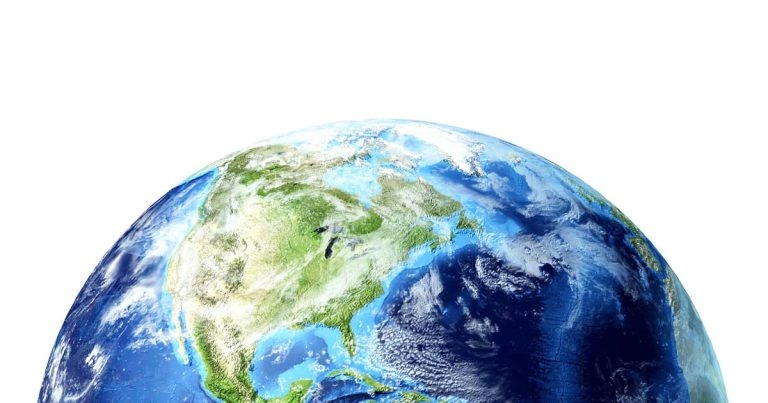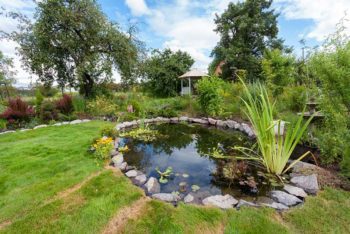10 Nov 2021
Andrew Prentis BVSc, MRCVS, summarises the main themes to be discussed at the 26th Conference of the Parties, and how these will impact vets and communication within the profession.

Image: © matis75 / Adobe Stock
COP26 stands for the 26th Conference of the Parties. Taking place in November in Glasgow, it will be attended by most if not all of the 196 countries that signed the United Nations Framework Convention on Climate Change (UNFCCC) in 1994.
The last major COP meeting in Paris in 2015 agreed a series of international actions to limit the global temperature rise to 1.5°C above pre-industrial levels, but climate change is happening faster than we anticipated and a series of missed targets mean that we are now heading for a 3°C rise. This would have catastrophic and almost certainly irreversible consequences for all of us.
The 1.5°C limit is still within our grasp, but only if we all – as nations, governments, industries, businesses and individuals – accept some fundamental changes to the way we live.
We will have to cut our collective carbon footprints by 50% over the next decade. And that’s not just the fossil fuels we burn, but all the activities we are involved in that cause any global warming emissions at all. It’s a reduction of 7.5% each and every year for the next 10 years.
How does this affect us in the veterinary professions? We don’t just practise medicine: we are scientists and we occupy a unique place at the interface between animals, humans and the environment. If we take a look at the main themes they’ll be discussing at COP26 we’ll see how these will impact our lives and the way we communicate with our colleagues, contacts and clients.
Most of us already spend our working lives giving advice to people, so let’s use this opportunity to play a greater role in sustainability.
“Global net zero” describes the point where all the global warming emissions we produce are balanced by an equal amount being removed from the atmosphere. It just means emission levels are not getting any worse.
This is very different from being “zero emissions”, but since the active removal of greenhouse gases is beyond the capability of most of us as individuals, let’s focus on the reducing the emissions we produce, and this is where most of them come from:
We all travel. We commute to work, do house calls or farm visits, have supplies delivered to our clinic, go out, go shopping, go on holiday, and visit family and friends. So if we’re going to cut our transport emissions by a minimum of 7.5% year on year, how do we do it?
Panel 1 lists the emissions for different modes of transport, as grams of carbon dioxide equivalent (CO2e) per mile travelled:
Yes, the figure for e-bikes is correct. Motive power from electricity from a renewable source is way more efficient than planting, growing, watering, fertilising, harvesting, processing, transporting and digesting food for energy.
If you have to drive, what you drive and how you drive it does make a huge difference: careful electric car driving is only marginally worse than walking, but a diesel SUV at 90mph produces twice the emissions of a first class plane flight.
And by the way, while air travel only makes up around 2% of global emissions, it’s massively skewed towards the richer countries and then massively skewed again towards a very small proportion of the population who fly a lot. So yes, flying off on holiday once a year is not a complete disaster, but regular flying certainly is.
Very few of us are involved in the supply of energy, but we can control who we support with our custom.
This means transitioning away from energy supply companies that are reliant on fossil fuels, and only using those that both buy electricity from renewable sources and actively invest in renewable power supplies. Ask them, and if they don’t, change.
Using a typical business metric for annual energy consumption of 290kWh/m2, each vet in practice probably consumes around 29,000kWh of energy per year. That amount of energy from oil or gas will produce 8 tonnes of CO2e. From wind or solar, it’s about 0.75 tonnes, so that’s a 90% saving right there.
Vet Sustain and the BVA have put together a “Greener Veterinary Practice checklist” for many more industry-specific actions we can take.
For your home, the numbers are broadly the same as for businesses:
Two sides to this exist: our personal choices and uniquely for us, the work we do with animals.
Firstly, we can adapt our food choices. Project Drawdown (drawdown.org) very clearly identifies that the two greatest single potential savings in the food sector are diet change to a plant-rich diet (30% of the available savings) and reduction in food waste (another 30%). And if you ever wondered about that “organic” label, it really is part of the route to a lower pesticide, lower fertiliser, lower carbon, lower emission, greater biodiversity future.
A recent paper in Nature Food (Xu et al, 2021) states that food animals produce 57% of all agricultural emissions and asserts that overall, animal-based foods produce twice the emissions of plant-based foods per unit of food energy.
Poore and Nemecek (2018) found that food from grazing animals produces emissions orders of magnitude greater than many plant-based foods (the CO2e metric quoted here is not ideal for food animals because it doesn’t take into account the duration of the various greenhouse gases, but it is widely used; Panel 2).
If you’re looking for another big cut in your personal emissions, here it is.
Secondly, we can use our influence with the farming and animal-owning communities. All the animals that we treat have a carbon footprint (CFP) and if we can make a reduction in ours, we ought to be able to find a way to reduce theirs, too.
Let’s start with the UK’s 15,700 pet vets (as full-time veterinary equivalents; FTVEs – BVA data). By taking the average annual CFP of a cat or dog (around 400kg CO2e each/year), multiplying that by the pet population and dividing by the number of vets working with them, the combined CFP of all the patients of each pet vet in practice comes to around 1,000 tonnes CO2e per year.
Given that as individuals our CFP will be around 10 tonnes CO2e a year, the potential impact of a 1%, 5%, 10% or 50% reduction in CFP of our pet patients is 100 times greater than that for any individual.
Let’s now look at the 1,750 FTVEs working with food animals, because the figures here are even more dramatic: on average, each FTVE dairy vet has a role in the management of cows with a combined annual CFP of 24,000 tonnes CO2e. For pigs its 27,000 tonnes and for poultry it’s a staggering 99,000 tonnes, per vet, per year.
If one of our primary focuses was on the environmental impact of all the animals we treated in addition to the more traditional concerns with animal health, animal welfare, productivity and profit, we could find ourselves making a huge contribution to climate change.
This might come over as slightly fanciful given the notoriously tight profit margins, low returns and fierce competition in the food industry, but the stakes are now very high indeed, and these numbers suggest that training our students and providing CPD on environmental impact could be a very good investment for all of us.

Protecting communities is arguably beyond our veterinary brief, but restoring natural habitats clearly is not, given that we are facing a monumental biodiversity crisis: the UK currently ranks 189th out of 218 in the world Biodiversity Intactness Index (RSPB, 2016).
We use a lot of pesticides. We prefer to call them parasite treatments, but we already know that their residues can be found in the waterways. The author has found little ecotoxicity data in the published literature on the environmental harm posed by parasiticides, with a literature review he is aware of coming to similar conclusions.
Almost no data exists on the number of our animals that actually have health problems due to parasites and the zoonosis numbers are tiny. Should we continue blanket treatment, or should we be risk assessing and testing first?
The UK has lost 97% of its wildflower meadows and around half of its ponds in the past 100 years. So for our gardens, and the land around our clinics and hospitals, let’s recreate more: choose indigenous, insect-friendly plants for the pollinators and ponds for biodiversity.
In England, the land area (according to the Corine Land Cover Inventory) is currently around:
Well-managed grazing livestock can use land for food production that is unsuitable for crops and regenerate depleted soil, but although permanent pasture may be as important a carbon sink as trees, our declining wildlife urgently needs more space and something has to give.
Just a few years ago, the acronym ESG (environmental, social and governance) was largely unknown in financial circles, but now the smart money is moving more and more towards sustainability.
Ask your bank, your business lender, your pension fund or your investments about their ESG status and their policy on fossil fuel investments, just as you would about their stance on gambling and the arms trade. Shifting your money shifts the market and when the money moves, actions change.
As with many things, it’s hard to make progress when working in isolation. But if we communicate and cooperate with our clients, our staff and our suppliers, we encourage each other.
The buzzword is transparency: tell people what you’re doing and let them see what you’re doing. It all helps build momentum and we’re going to need a lot of that in the years ahead…